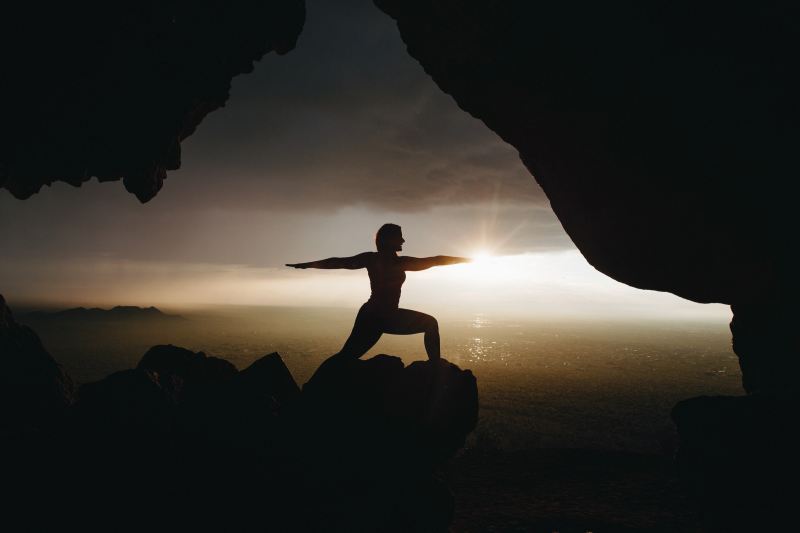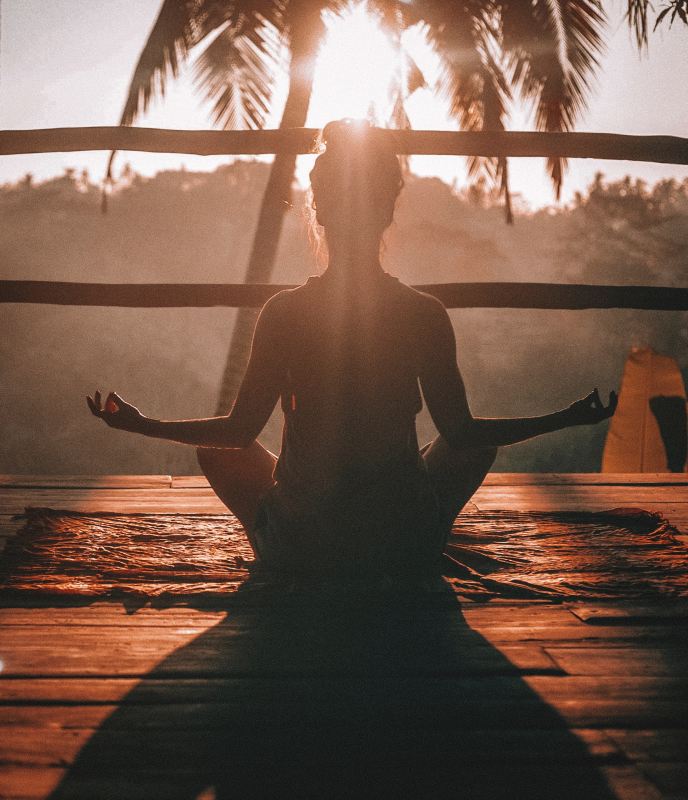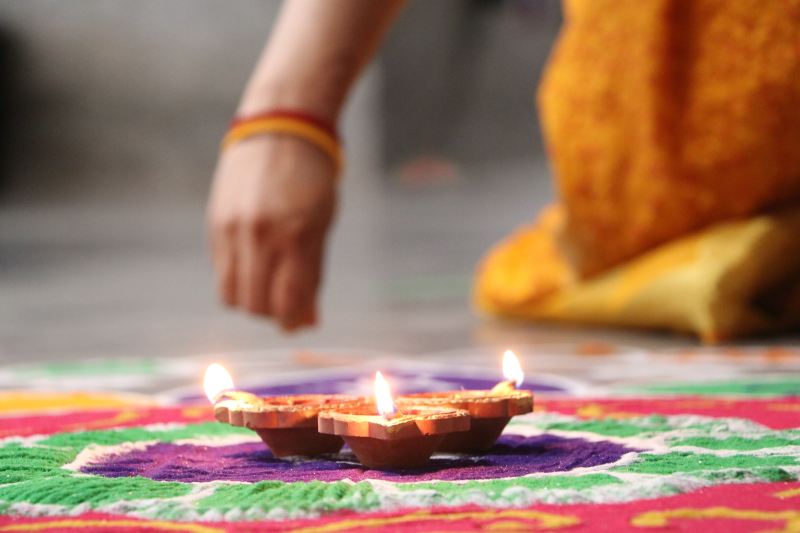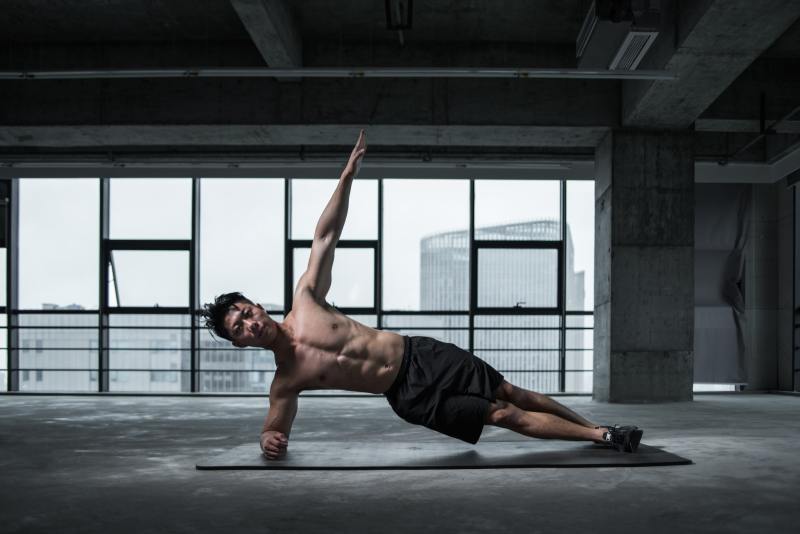
Yoga promotes physical and mental well-being and unity and harmony of the body and mind. The ancient practice of yoga is skyrocketing in popularity as more people discover the benefits, from reducing stress and anxiety and calming the mind to boosting strength, balance, and flexibility. Yoga studios, classes, and discussions are popping up everywhere. You might be wondering, how did yoga start? What’s the history behind this beloved form of exercise? Yoga has a long and fascinating history rich in culture, spirituality, and philosophy.

What is yoga?
Yoga is a type of meditative movement involving specific physical postures and poses and a focus on deep breathing. Yoga enhances mindfulness and your ability to achieve a higher state of consciousness and better connect with your authentic self, nature, and the world around you.
There are different styles and intensities of yoga, including gentler and slower practices and more physically demanding practices. Yoga might include chanting and other meditation methods. Almost anyone can practice yoga to varying degrees, from children to older adults.

Where did yoga come from?
The ancient system of yoga practices originated in India and has been passed down for thousands of years from teacher to student. Yoga is a Sanskrit word — the classical sacred language of Hinduism that arose in South Asia. In English, the word translates to “yoke” or “union,” which means to unite or draw together. With yoga, the idea is to unite your mind, body, and spirit.

The four periods of yoga’s history
The long history of yoga is categorized into four periods: pre-classical, classical, post-classical, and modern.
Pre-classical (vedic)
The Indian Government’s Ministry of External Affairs states that the Indus-Sarasvati civilization cultivated the earliest theory of yoga in Northern India around 2,700 B.C. — the dawn of the pre-classical period. Many people claim the discipline dates back well over 5,000 years ago and early writings of yoga were documented on palm leaves.
Ancient Indian texts (sūktas) mention yoga, such as the Rig Veda, which was mostly composed between 1500 and 1000 B.C. Rig Veda is one of the holiest texts in Hinduism, often used by Vedic priests. Rig Veda contains mantras, rituals, and songs and provides tips for controlling your breath and balancing energies.
The Upanishads collection of yogic texts dates back to 800 B.C. and contains 200 scriptures. Upanishads collection shows the refinement and development of yoga and centers on the overarching sacrifice of the ego through wisdom, self-knowledge, and action. You can find variations of the schools of yoga in Buddhism, Hinduism, and Jainism.
Classical
The classical period dates roughly between 500 B.C. and 800 A.D. and is largely focused on Patanjali’s Yoga-Sûtras. Patanjali was a Hindu philosopher, mystic, and author often called the father of yoga. He fine-tuned a more systematic presentation of yoga (classical yoga) and detailed the “ashtanga” or the “eight-limbed path” to enlightenment in the Yoga-Sûtras.
Post-classical
During the post-classical period, around 800 A.D. to 1700 A.D., yoga masters shifted away from the ancient Vedas and developed Tantra Yoga. The aim of Tantra Yoga is to cleanse and rejuvenate the body and mind and increase longevity. Yogis zoned in on how this meditative movement can improve your physicality. This post-classical period also led up to the creation of Hatha Yoga — the most common yoga practice we see in the West today. The word Hatha means force in Sanskrit, emphasizing the importance of the physical body as well as the mind.
Modern
The modern period stemmed from the late 1800s and early 1900s when yoga picked up steam in the West as yoga masters traveled around America and Europe sharing their teachings. Scholars and curious intellectuals attended the lectures of these Hindu teachers.
The Western public started learning about yoga during the mid-19th century, and by the late 1940s, yoga studios had made their way to Hollywood. Many schools of yoga were founded in the 20th century, including Bikram yoga.

Modern yoga today
Today, modern yoga encompasses a range of practices with different poses and purposes. It’s a thriving multibillion-dollar industry and a huge talking point in the health and fitness world. Yoga isn’t designed to be esoteric; people from all walks of life can learn and practice yoga. There are modified versions of the poses for those with physical limitations. Typically, the more you practice, the better you’ll get.
You might decide to try yoga to reap the benefits, such as increased flexibility and strength and a reduction in stress and anxiety. Yoga has been proven to be an effective alternative treatment for major depressive disorder and for lowering inflammation. Inflammation is a key driver in a multitude of chronic illnesses, including arthritis, diabetes, heart disease, and Crohn’s disease.
Yoga is different from many other forms of exercise due to its interesting spiritual and philosophical history. For thousands of years, yoga practitioners have been joyfully sharing the benefits and wonders of yoga. Now, yoga has made its way from India all over the world. Yoga has stood the test of time, and people everywhere are still using this ancient practice to improve their mental and physical health.
Editors' Recommendations
- The 3 best punching bag workouts to transform your fitness routine
- How (and why) parmesan, pecorino romano, gruyere, and asiago cheeses may help with digestive issues
- The ultimate premium gift guide for the yoga lover in your life
- Romaine lettuce, iceberg lettuce, and more: Science says one is actually the healthiest choice
- Weight loss while eating more fat – Here’s how it works




